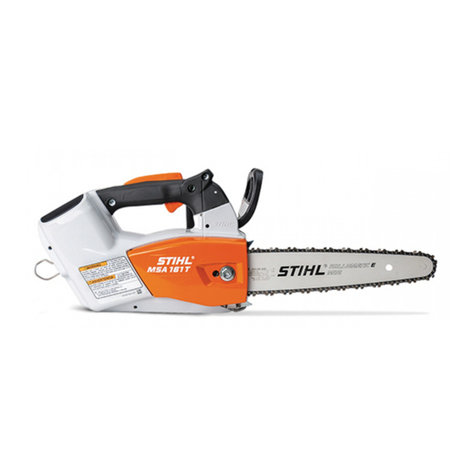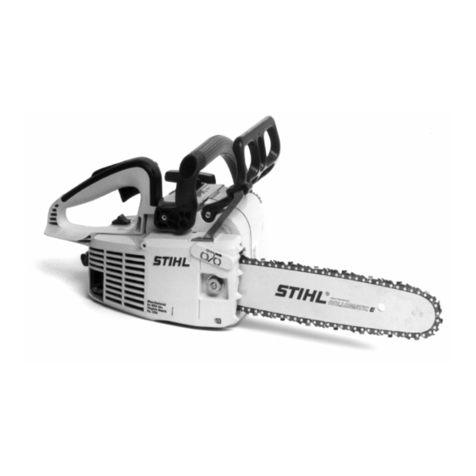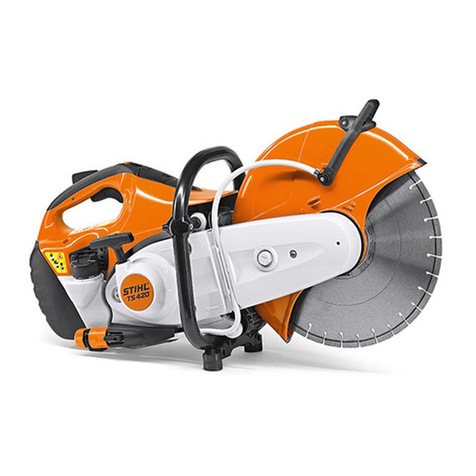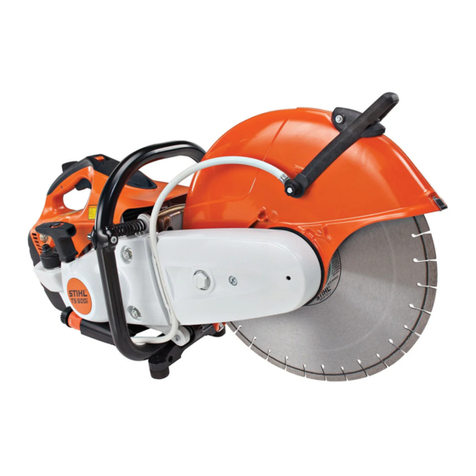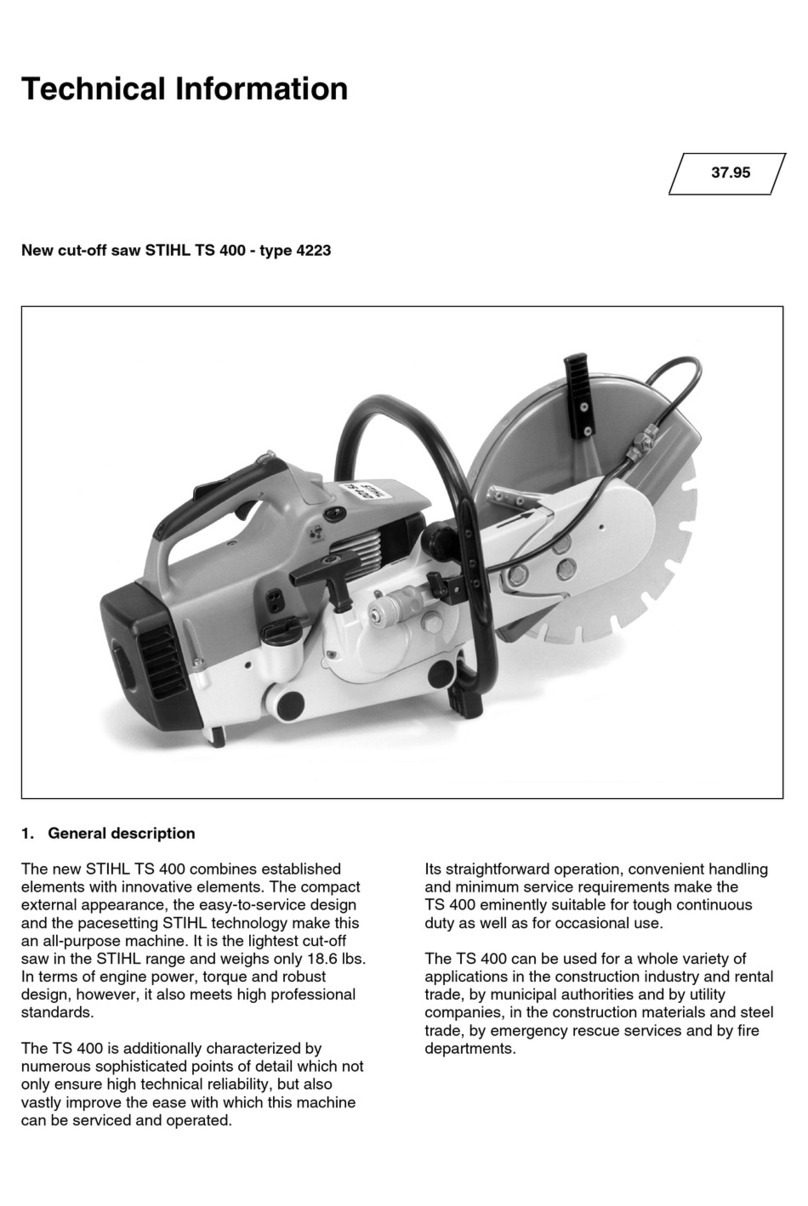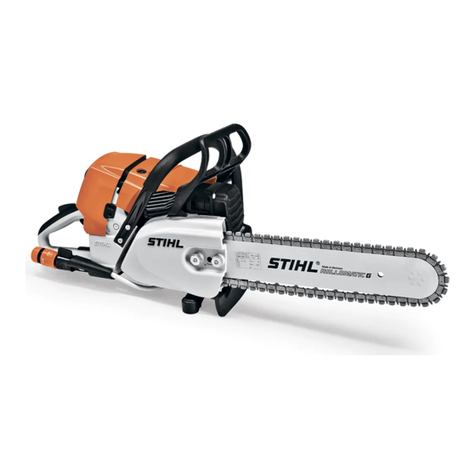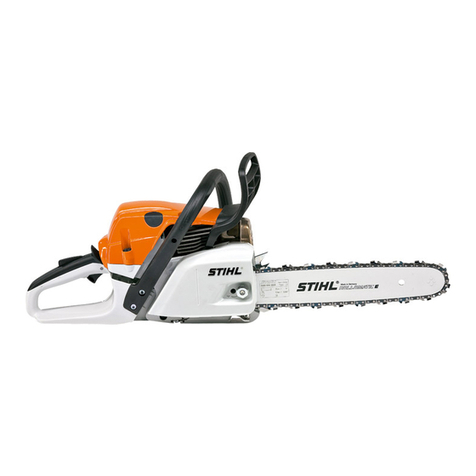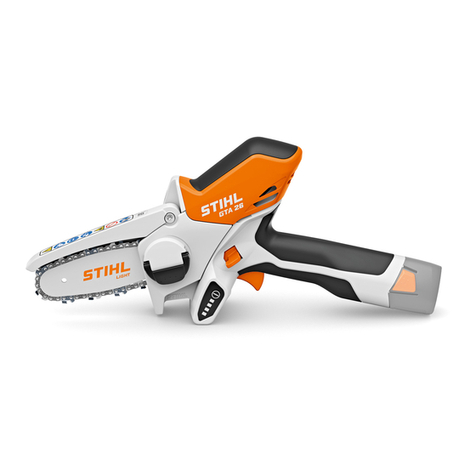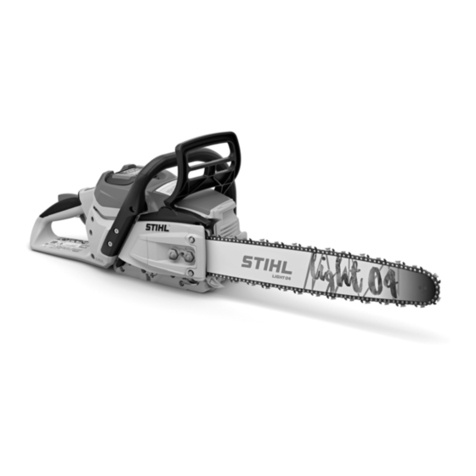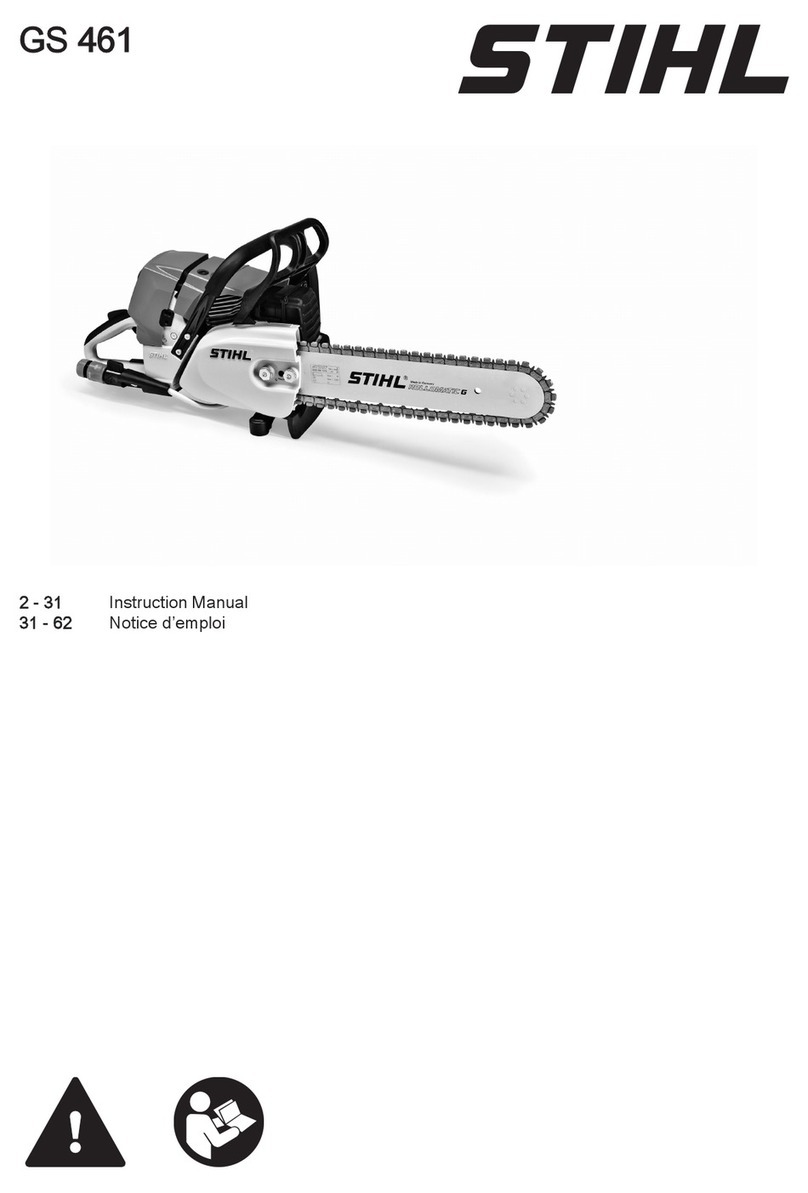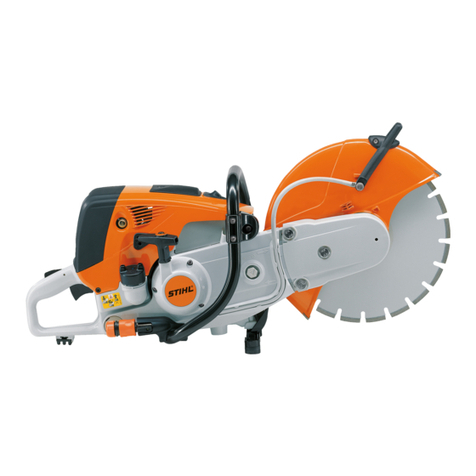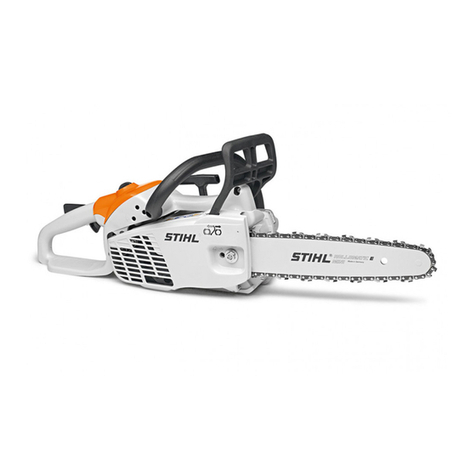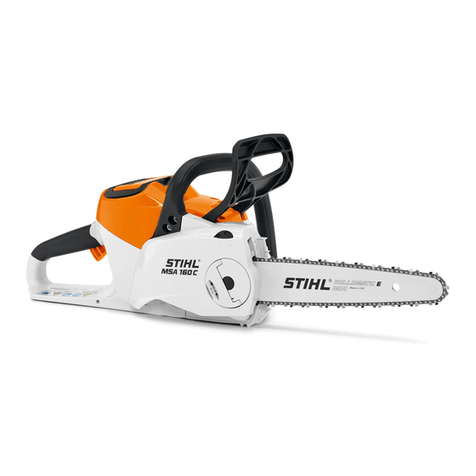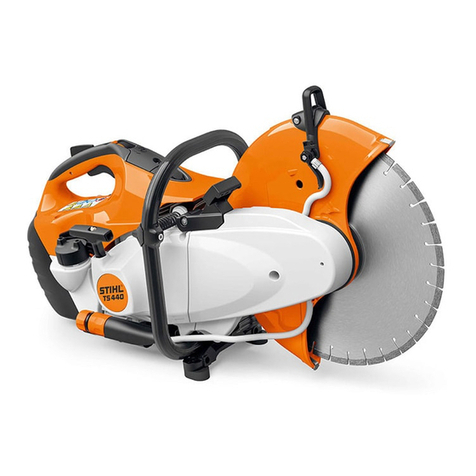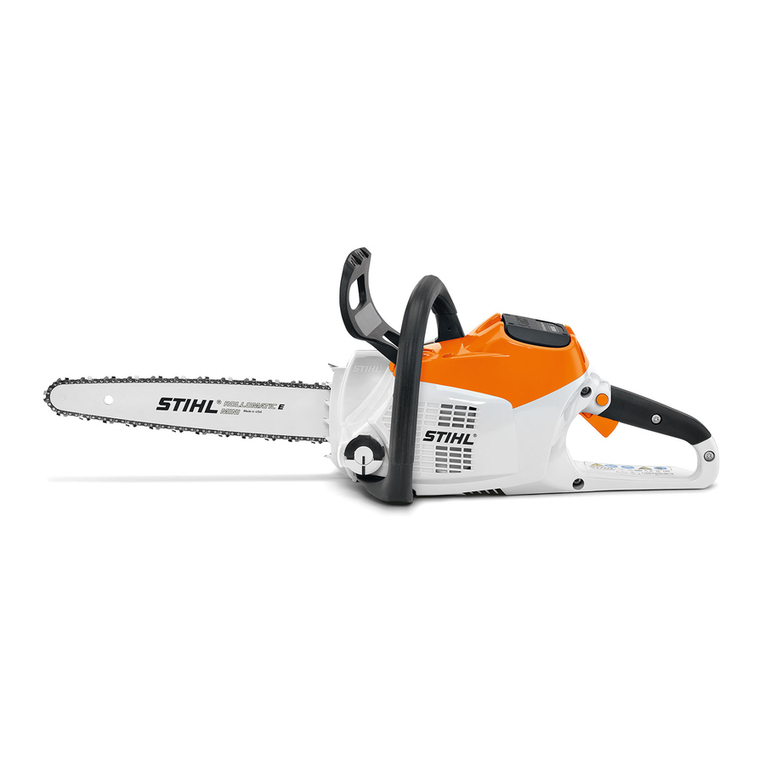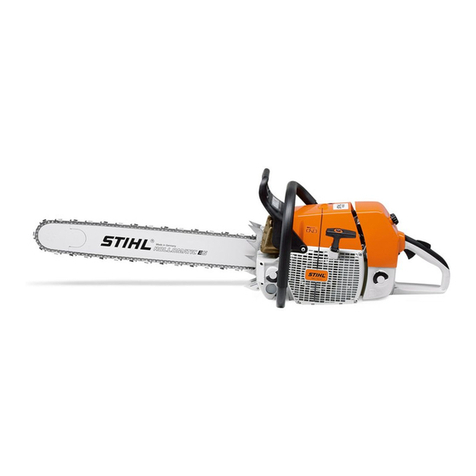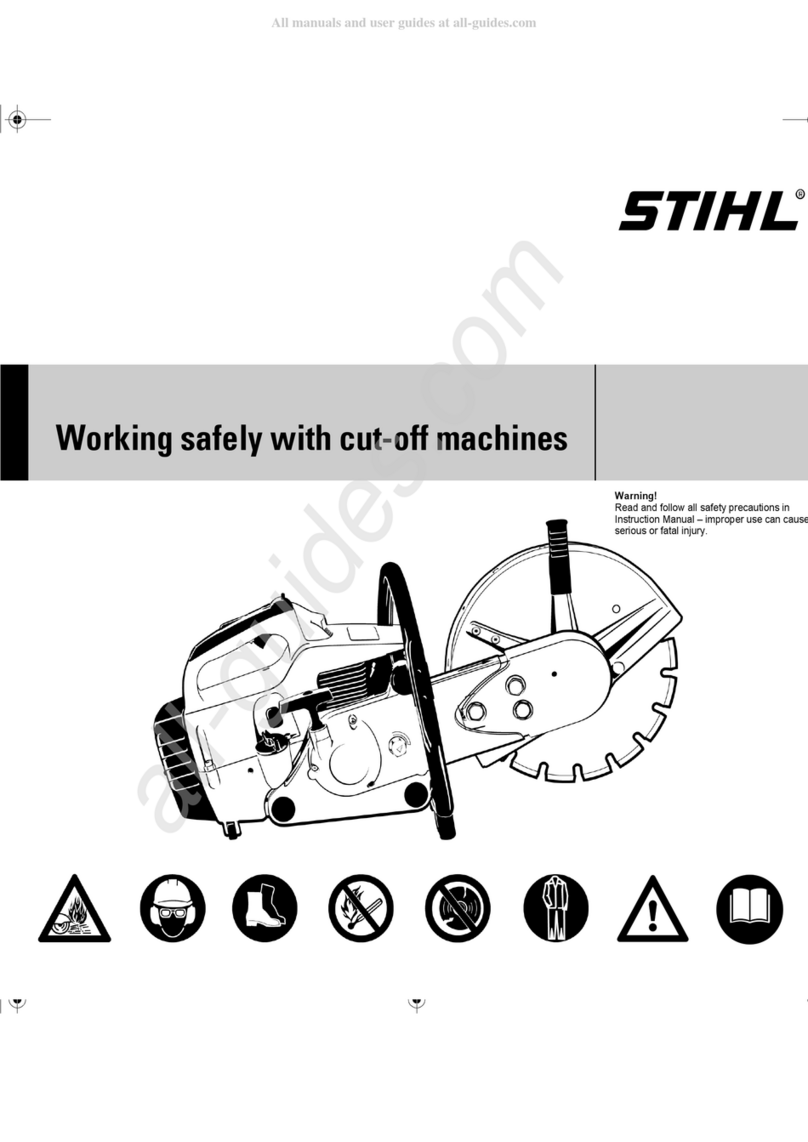
TS 700, TS 800
English
7
Note the direction of flight of the
removed particles of material.
While working
If there is imminent danger or in an
emergency, immediately stop the
engine – set the slide control / master
control lever /stop switch to STOP or 0.
Check for correct idling, so that the
cutting wheel is no longer driven when
the throttle trigger is released and
comes to a complete halt.
Check and correct the idle speed setting
at regular intervals. Have the machine
repaired by a STIHL dealer if the cutting
wheel continues to turn nevertheless.
Keep clear the working area – bear in
mind obstacles, holes and pitches.
Take special care in slippery conditions
– damp, snow, ice, on slopes or uneven
ground.
Don not work while standing on a ladder
– not on an insecure support – not over
your shoulder height – not with one hand
only – risk of accident!
Make sure you always have good
balance and secure footing.
Do not work alone – keep within calling
distance of others in case help is
needed.
Keep out further persons from the
working area – maintain sufficiently large
distance to additional persons to protect
them from noise and flying objects.
Be particularly alert and cautious when
wearing hearing protection because
your ability to hear warnings (shouts,
alarms, etc.) is restricted.
Take a break in good time before you
get tired.
Work calmly and carefully – in daylight
conditions and only when visibility is
good. Proceed with caution, do not put
others in danger.
Ensure proper ventilation when working
in trenches, hollows or similar locations
– risk of fatal injury from breathing toxic
fumes!
Stop work immediately if you start
suffering from nausea, headaches,
impaired vision (e.g. your field of vision
gets smaller), impaired hearing,
dizziness, or impaired concentration –
these symptoms may possibly be the
result of too-high exhaust gas
concentration – Risk of accidents!
To reduce the risk of fire, do not smoke
while operating or standing near your
power tool.
If your power tool is subjected to
unusually high loads for which it was not
designed (e.g. heavy impact or a fall),
always check that it is in good condition
before continuing work – see also
"Before Starting". Check in particular
that the fuel system has no leaks and the
safety equipment is fully operative.
Never use a power tool that is no longer
safe to operate. In case of doubt, contact
a dealer.
Do not operate your power tool in the
starting throttle position – engine speed
cannot be controlled in this position.
Never touch a rotating abrasive cutting
wheel with your hand or any other part of
your body.
Examine the workplace. Avoid all
danger due to damaged piping or
electrical wiring.
The machine must not be used near
inflammable substances or gases.
Do not cut into pipes, metal tanks or
other containers if you are not sure that
they do not contain any volatile or
inflammable substances.
Never leave the machine unattended
with the engine running. Stop the engine
before leaving the machine unattended
(e. g. for breaks).
Before putting the cut-off machine down
on the ground:
–Shut off the engine
–Wait until the abrasive cutting wheel
has come to a standstill or brake the
abrasive cutting wheel until it comes
to a standstill by carefully touching a
hard surface (e.g., concrete slab)
As soon as the engine is
running, the power
machine generates toxic
exhaust gas. These
gases may be odorless
and invisible and may
contain unburned hydro-
carbons and benzene.
Never run the engine
indoors or in poorly venti-
lated locations, even if
your model is equipped
with a catalytic converter.
Frequently inspect the
abrasive cutting wheel –
replace it right away if
there are visible cracks,
buckling or other damage
(for example, overheat-
ing) – risk of accident due
to breakage!


